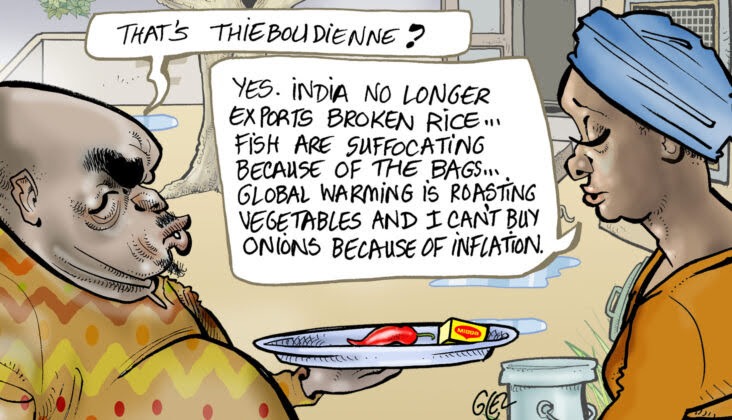Already weakened by the inflation caused by the Ukrainian conflict, part of Africa will have to deal with the reduced influx of rice from India.Alert on the yassa! All hell breaks loose for the tiguè-diguè! Jollof is in danger! Africa is still seeing the effects of the Ukraine war on price curves and knows that further disruptions are in the pipeline.
When he negotiated with Vladimir Putin to release the grain and fertiliser stocks that have been blocked since the Russian president launched his “special military operation” in Ukraine, did the current chairperson of the African Union foresee, in June, that his weekend there would be threatened by more eastern players?The worrying news came from India.
HighFollowing warnings in May, the huge South Asian country has just confirmed that it is limiting its rice supplies to Africa, notably by banning the export of broken rice, a grain prized by West Africans, and by imposing a 20% tax on exports of other types of high-quality rice.
An opportunity?This time it has nothing to do with conflict, even though New Delhi certainly has tense relations with many of its neighbours.
The world’s largest rice exporter is instead cutting back on how much disrupted production it sells abroad due to the effects of the drought. Nations such as Senegal are largely dependent on this source of supply.
For instance, the country of Teranga imported 1m tonnes from India during the 2021-2022 season. In Benin, 75% of the rice consumed comes from the country of Mahatma Gandhi.Unfortunately, the road to scarcity is paved with a shortage that will maintain the current inflationary cycle.
With the rise in the price of European wheat and Asian rice, the economic (war) and structural (climate) situation raise questions about consumption habits, the interest in having globalised tastes and the risk of long commercial circuits.
UShould Indian export restrictions be seen as an opportunity for Africa? An opportunity to make dishes with more local ingredients, vegetables and so-called ‘indigenous’ grains – millet, fonio, teff and sorghum – and perhaps grow rice in Africa?BetConsumers have shunned continental rice so much that farmers have not plunged headlong into the rice business, although some rice farmers have taken up the challenge in Nigeria, Egypt, Tanzania and Madagascar. Rarely have they achieved self-sufficiency, some 15 years after the “hunger riots”. 30% of the rice that Mali consumes comes from the inland delta of the River Niger, for example.
Africans will have to make trade-offs in their menus and possibly reduce their rice consumption. International institutions are concerned about the risk of famine in several parts of the continent, even though alternatives exist.
